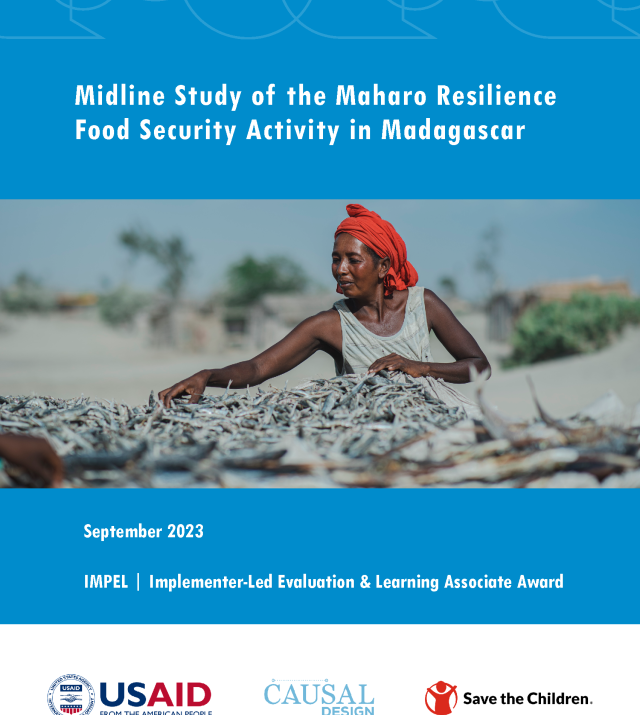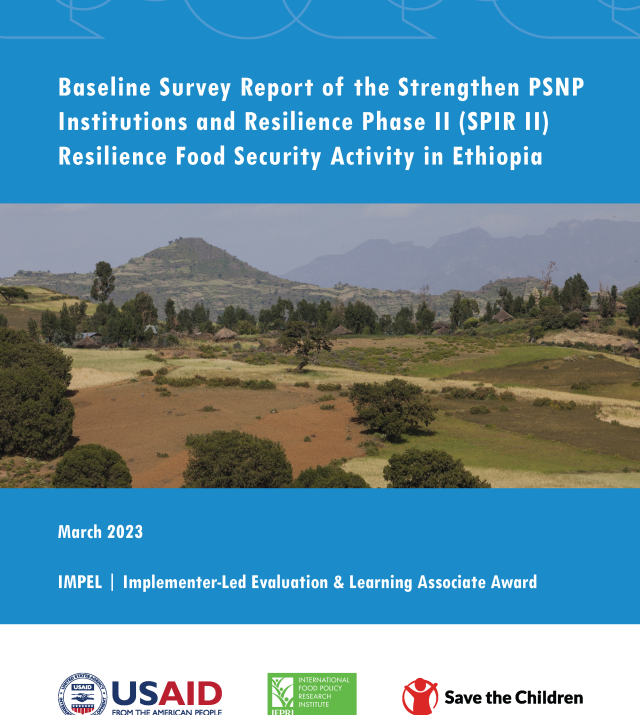
Impact Evaluation: Resilience Food Security Activity Graduating to Resilience in Uganda, Phases I & II

Overview
The Graduating to Resilience activity is a Resilience Food Security Activity (RFSA) implemented by the AVSI Foundation, an international non-governmental organization, and is funded by the United States Agency for International Development Bureau for Humanitarian Assistance. The Graduating to Resilience activity is implemented in and around the Rwamwanja Refugee Settlement in Kamwenge District, Uganda, and is offered to extremely poor households living in both the refugee and host communities in this area. The goal of the activity is to graduate extremely poor refugee and Ugandan households from conditions of food insecurity and fragile livelihoods to self-reliance and resilience.
Phase II: Midline Report
In 2022, AVSI launched Cohort 2 of the Graduating to Resilience activity, which runs from January 2022 to December 2023. Cohort 2 uses Cohort 1 results to deliver a refined version of the Graduation Approach and adds a group therapy component guided by interpersonal therapy (IPT) principles to improve mental health. The Cohort 2 Graduating to Resilience activity includes approximately 3,400 households in the settlement and 3,600 in the host community. This study is an intervention trial aiming to estimate the impact of adding group therapy to a graduation model on refugees and host communities.
The research questions were:
- Can a group therapy intervention improve the mental health of primary participants?
- Can this improvement in mental health improve the economic outcomes of primary participants as they engage more effectively with their livelihoods?
- Can those additional effects on economic outcomes have downstream effects on consumption that can be compared against the additional costs to evaluate cost-effectiveness?
Phase II: Baseline Survey
This report provides an overview of the Graduating to Resilience RFSA, describes the evaluation design for the activity’s second cohort, and provides summary statistics and indicator estimates based on a recently completed round of baseline data collection. Innovations for Poverty Action, with a team of 38 enumerators, administered a baseline survey to 2,570 households in November and December 2021, in the Kamwenge district and in the Rwamwanja settlement. The survey took place before the kickoff of the Graduating to Resilience Cohort 2 and its Interpersonal Psychotherapy in Groups interventions, which started in February 2022.
In 2021, Phase 2 consists of both a round of follow-up surveying of Cohort 1 study participants to measure longer-term impacts, as well as an evaluation designed specifically around Cohort 2 interventions. The latter aims to provide new evidence on how to amplify the impact of the Refined Graduation Approach by incorporating low-cost mental health treatments using Interpersonal Psychotherapy in Groups (IPT-G) methodology. This report focuses on a recent round of baseline surveying that was conducted as part of the design to evaluate Cohort 2. The evaluation of Cohort 2 of the Graduation to Resilience activity has two objectives. The first is to assess the impact of the Refined Graduation Approach in the context of the Phase 2 evaluation. The second objective is to provide new evidence on how to amplify the impact of the Graduation Approach by incorporating low-cost mental health treatments through the IPT-G intervention.
Phase I: The Impact of a Graduation Program on Child Development in Refugee and Host Communities in Uganda
This study is an intervention trial that aims to estimate the impact of the Graduating to Resilience activity on child development in Uganda. Researchers revisited a sample of households enrolled in the Graduating to Resilience trial conducted in Uganda in 2019–2021 and assessed children born during the intervention.
The target sample was composed of 1,688 households residing in 57 study villages. Eligibility for the sample was restricted to households enrolled in Arm 1, Arm 2, and Spillover Control. Researchers used two instruments to measure child development: Bayley Scales of Infant and Toddler Development (BSID) and Caregiver Reported Early Development Instruments (CREDI). Between September 14 and November 9, 2022, Innovations for Poverty Action conducted a follow-up survey and interviewed 1,503 caregiver-child dyads, 507 dyads from Arm 1, 520 from Arm 2, and 476 from Spillover Control.
Phase I: Endline Report
Evidence from multiple contexts suggests that the Graduation Approach, which provides holistic livelihood support for ultra-poor households, has lasting positive impacts on a range of outcomes. However, graduation programs are relatively expensive because of the intense level of support they offer. The costs pose a challenge for governments that want to implement the approach at scale. In Uganda, researchers worked with Innovations for Poverty Action to conduct a randomized evaluation to understand better the effectiveness of several variants of a graduation program focused on improving nutrition and self-reliance among populations in and around a refugee settlement. The activity had significant positive impacts on key outcomes for both participants and their households, including food security, nutrition, and self-reliance. All variations of the program also had large positive returns on investment.
The study was designed to test the relative performance and cost-effectiveness of three activity variations. Households in treatment arm “T1” were coached individually and received a cash asset transfer. Households in treatment arm “T2” were coached in groups and received a cash asset transfer. Households in treatment arm “T3” were coached individually but did not receive a cash asset transfer. Both T2 and T3 were variations chosen to identify lower-cost, more cost-effective versions of the standard version, which is T1. To estimate the impact of each of the three intervention arms, households were compared to a control group in control villages (“Pure Control”).
